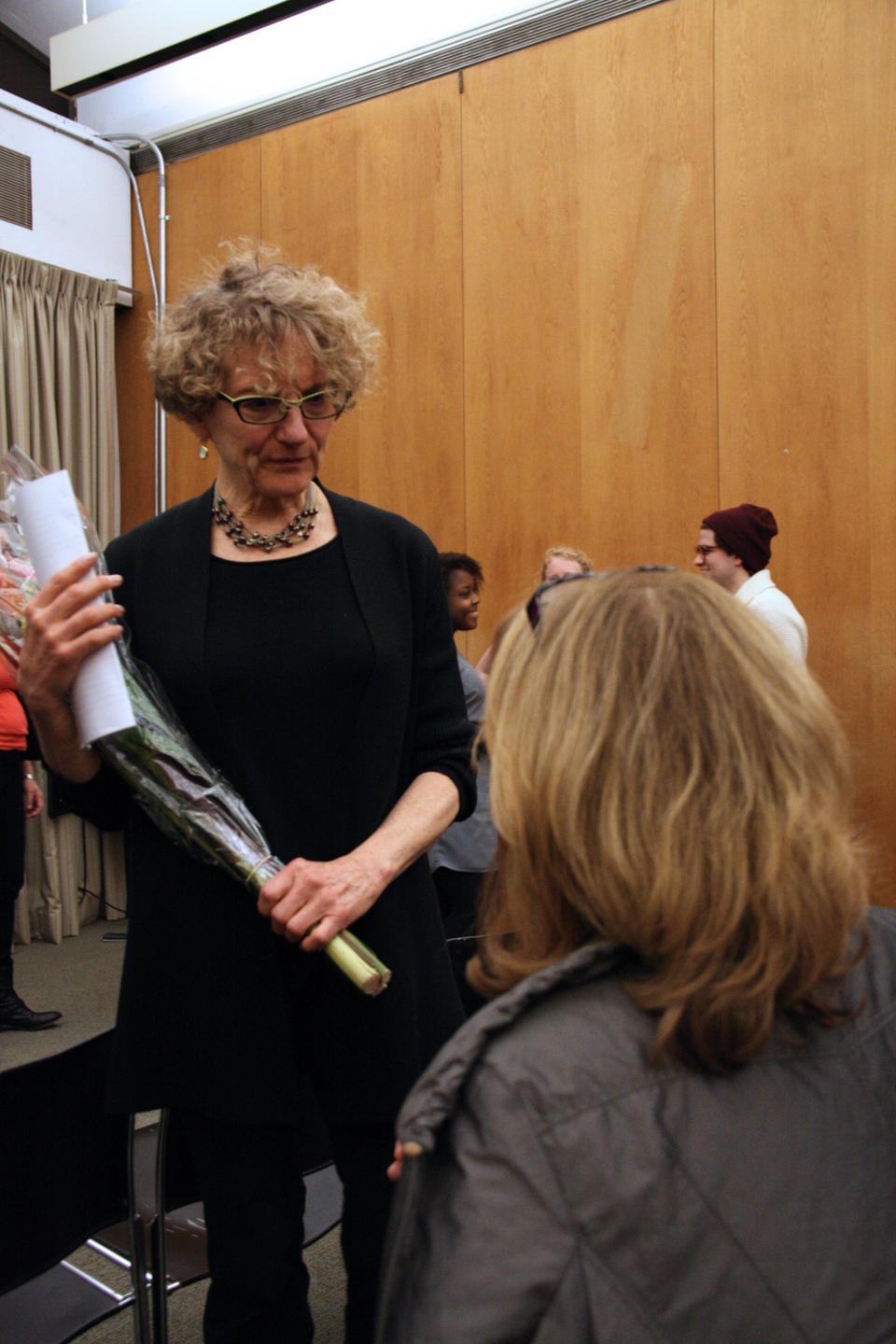
News
Summers Will Not Finish Semester of Teaching as Harvard Investigates Epstein Ties

News
Harvard College Students Report Favoring Divestment from Israel in HUA Survey

News
‘He Should Resign’: Harvard Undergrads Take Hard Line Against Summers Over Epstein Scandal

News
Harvard To Launch New Investigation Into Epstein’s Ties to Summers, Other University Affiliates

News
Harvard Students To Vote on Divestment From Israel in Inaugural HUA Election Survey
SOCH Hosts 'Body of Work'

Creative expression can play a major role in the process of recovering from eating disorders, said artist Judith Shaw, who exhibited a collection of pieces inspired by her own struggle with anorexia alongside an exhibition of student work at the Student Organization Center at Hilles on Thursday.
Shaw, who said she never considered herself an artist before her disease, first showed her collection at an art gallery in St. Louis. After a viewer encouraged her to bring her work to students, she exhibited it at schools across the country.
Shaw says she was stunned by students’ positive response to her work. She attributed their curiosity to the fact that many affected by eating disorders suffer in silence.
“It’s a very hard illness to get a grasp on,” Shaw said. “My work takes a mental illness and translates it into something concrete that someone can begin to understand.”
SOCH curator Kristen L. Cronon ’12 said the collaboration with Shaw coincided with an existing initiative to create a student exhibit focusing on bodies, noting that the two collections were united by central themes of self-perception and a struggle with body image. The eventual joint exhibit was titled “Body of Work.”
“The common thread is the idea of creative expression as a means of processing bodily vulnerability,” Cronon said.
The event was co-sponsored by Eating Concerns Hotline and Outreach, the Office of Sexual Assault Prevention and Response, the Peer Contraceptive Councilors, and Sexual Health Education and Advocacy Throughout Harvard College.
“Body of Work” was not the first time student art at the SOCH has centered on a social or political issue, said Cronon, who noted that a past SOCH exhibit on homes and domestic spaces served as the forum for a broader discussion about homelessness.
“I’m pretty into art as activism,” Cronon said, stressing the importance of a dialogue about eating disorders at perfection-driven colleges like Harvard.
“Eating disorders are especially prevalent in high-pressure environments,” she said.
Jennifer L. Maggio ’12, who contributed the piece “Lips” to the exhibit, echoed Cronon’s concerns, pointing to anonymous posts from people struggling with eating disorders on websites like HarvardFML as evidence that a more open and public conversation about the issue is needed on campus,
“I think it’s definitely an important theme to address, especially at a college where you have a lot of stress to be the perfect boy or the perfect girl, and physical image is a big part of that,” she said.
“Hopefully people recognize this issue, are more sensitive to it, and realize that expressing yourself in an artistic way is another method of healing yourself,” Maggio said.
Speaking to the role of artistic expression in the healing process, Shaw contrasted her low self-worth during her illness with the sense of empowerment she derived from her work. “I felt so imperfect and so flawed,” she said.
Now, she said, “I just feel fearless.”
Want to keep up with breaking news? Subscribe to our email newsletter.
